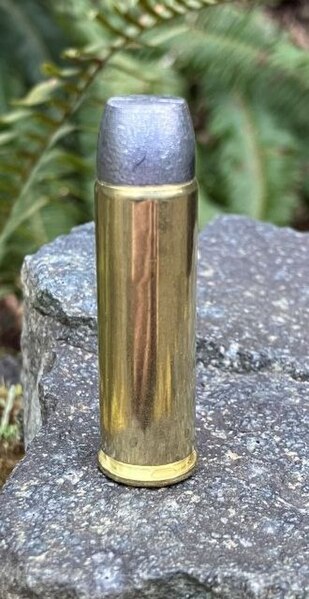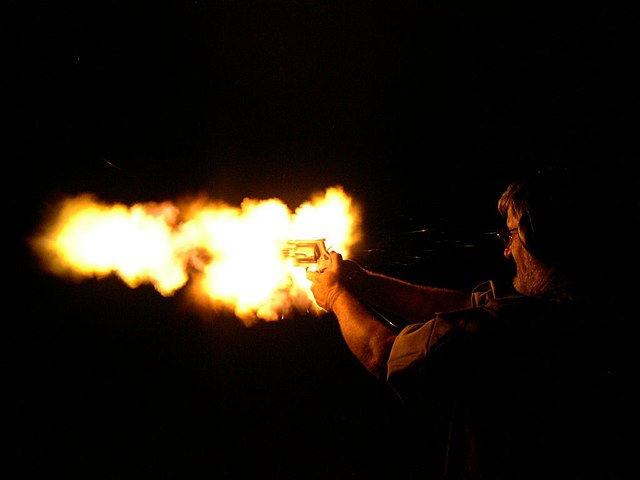The .500 S&W Magnum or 12.7×41mmSR is a .50 caliber semi-rimmed revolver cartridge developed by Cor-Bon in partnership with the Smith & Wesson "X-Gun" engineering team for use in the Smith & Wesson Model 500 X-frame revolver and introduced in February 2003 at the SHOT Show. From its inception, it was intended to be the most powerful handgun cartridge to date, with the capacity to harvest all North American game species. While more powerful handgun cartridges, such as the .500 Bushwhacker, have emerged since, they are only available in custom firearms, and the .500 S&W remains the most powerful production handgun cartridge.
A .500 S&W Magnum Cartridge.
The first revolver which could accommodate the .500 Magnum cartridge was the massive Smith & Wesson Model 500. A 1 euro coin, similar in size to an American quarter, is pictured for scale.
Comparison of the popular .44 Magnum (left) to the .500 S&W cartridge (right).
Size comparison of a 500 S&W round and a human hand
The Smith & Wesson Model 500 is a five-shot, double/single action large-caliber revolver produced by Smith & Wesson, firing the .500 S&W Magnum cartridge.
A comparison of the Smith & Wesson Model 500 (above) and its .44 Magnum sibling, the Model 629 (below). The difference in size between the .44 Magnum and the .500 Magnum cartridges is also shown.
S&W Model 500 being fired at night
Image: Smith & Wesson Model 500 flickr szuppo
Image: Offhandgroup 25








